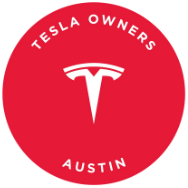However, the implications of Tesla’s camera-only approach to autonomous driving technology are significant. The recent test conducted by Mark Rober highlights a major weakness in Tesla’s system that could have serious consequences on the road.
The video test, inspired by an old Looney Tunes cartoon, involved painting a fake tunnel on a wall to see if a Tesla on Autopilot would be fooled into crashing into it. Unfortunately, the Tesla did not detect the fake wall and crashed into it, much like Wile E. Coyote would in the cartoon.
In contrast, a lidar-equipped Lexus SUV test vehicle from Luminar was able to detect the fake wall and stop before hitting it. This demonstrates the limitations of Tesla’s camera-only approach to autonomous driving technology when faced with unexpected or unconventional road obstacles.
While Tesla’s Autopilot and Full Self-Driving systems have shown improvement over the years, they have also been involved in numerous crashes, some of them fatal. This has raised concerns and led to investigations by state and federal authorities.
Many experts in the field of autonomous driving argue that Tesla’s reliance on cameras and artificial intelligence alone is insufficient for creating truly safe and reliable self-driving cars. The lack of additional sensors like radar and lidar may leave Tesla vehicles vulnerable to certain scenarios that could be easily avoided with a more comprehensive sensor suite.
Despite Elon Musk’s confidence in Tesla’s camera-based approach, the test conducted by Mark Rober raises important questions about the effectiveness and safety of this technology. As the race towards fully autonomous vehicles continues, it will be crucial for companies like Tesla to address these concerns and ensure the safety of both drivers and pedestrians on the road. Tesla’s camera-based system has been a topic of discussion for quite some time now, especially with the recent unveiling of the Cybercab. The video showcasing the interior of the Cybercab raises some interesting questions about what Tesla’s camera-based system might miss in the future if cars no longer come equipped with steering wheels or pedals.
The video gives us a glimpse of what the interior of a Tesla without traditional controls looks like. The absence of a steering wheel and pedals indicates that Tesla is moving towards a fully autonomous driving experience. While this may sound like a futuristic and convenient concept, it also raises concerns about the potential limitations of a camera-based system in detecting and reacting to certain scenarios on the road.
One of the main concerns is the system’s ability to accurately identify and respond to unexpected obstacles or road hazards. While Tesla’s cameras are equipped with advanced technology to detect objects and navigate the vehicle accordingly, there is always a possibility of the system missing certain details that a human driver would easily pick up on. This could pose a safety risk in situations where quick reflexes and decision-making skills are crucial.
Another potential issue is the system’s ability to adapt to changing road conditions and weather patterns. While Tesla’s cameras are designed to capture a wide range of visual information, they may struggle to perform effectively in adverse weather conditions such as heavy rain, snow, or fog. This could affect the system’s ability to make accurate driving decisions and navigate safely in challenging environments.
Furthermore, the absence of traditional controls like a steering wheel and pedals raises questions about how passengers would interact with the vehicle in emergency situations. Without manual controls, passengers may feel a lack of control over the vehicle, which could lead to anxiety or discomfort while riding in a fully autonomous car.
In conclusion, while Tesla’s camera-based system has shown impressive capabilities in terms of autonomous driving, there are still some limitations and potential challenges that need to be addressed. As cars move towards a future without steering wheels or pedals, it will be crucial for manufacturers to ensure that their systems are equipped to handle a wide range of scenarios and road conditions effectively. Only time will tell how Tesla and other automakers navigate these challenges and continue to push the boundaries of autonomous driving technology.

